Deadly passage for a mountain lion
August 31, 2011
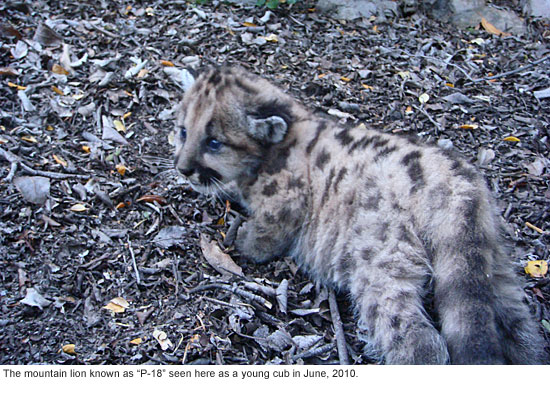 He was little more than a teenager, strong and healthy, big for his age and not yet fully grown. What he was doing at night near the freeway is uncertain; those who knew him believe that like, most late adolescents, he was just looking for some turf that hadn’t already been claimed by others, just trying to strike out on his own.
He was little more than a teenager, strong and healthy, big for his age and not yet fully grown. What he was doing at night near the freeway is uncertain; those who knew him believe that like, most late adolescents, he was just looking for some turf that hadn’t already been claimed by others, just trying to strike out on his own.
In any case, the 15-month-old mountain lion known to the National Park Service as P-18 (the “P” stood for “Puma”) somehow wandered onto the 405 Freeway just south of the Getty Center southbound onramp shortly after 4 a.m. Tuesday. His death was a hit-and-run.
“He was found at 7:30 am when traffic started backing up and the CHP went in and found a dead lion with a GPS collar,” says a stricken Christie Brigham, chief of planning, science and resource management for the Santa Monica National Recreation Area. Born last May in the Santa Monica Mountains and part of a decade-long national study, the lion’s movements had been tracked since he was three weeks old.
A total of 21 mountain lions have been tracked since 2002 in the area, says Woody Smeck, park superintendent in the Santa Monica Mountains National Recreation Area. Of those, Smeck says, only one is known to have successfully crossed a freeway. A lion known as P-12 crossed Highway 101 in 2009 into the Santa Monica Mountains near Liberty Canyon. He survived to father the cub who died this week.
Southern California’s freeways may not invite their denizens to think much about nature, but wildlife crossings are a significant transportation issue in L.A. Great swaths of natural habitat here are bisected by asphalt, which may impede the movement of coyotes, mountain lions, bobcats, raccoons and other native species but doesn’t stop their instinct to travel in search of food and mates.
Wild animals require safe access to new territory so they don’t inbreed and endanger their species’ survival. Male mountain lions in particular tend to range widely, says Brigham, and previous tracking has shown them to range throughout the entirety of the Santa Monica Mountains, from Camarillo to the 405 Freeway.
P-18, she says, was one of four lions being tracked this summer; he had appeared to be slowly making his way east from his mother’s home range in Malibu Creek State Park. Radio telemetry signals from his collar placed him near the Getty Center around 4 a.m. just south of an onramp
“We suspect there was another, untagged, male lion using that part of the moutain, which meant it wasn’t an open territory for him as a young male,” says Brigham. “We think he was trying to disperse out of the Santa Monicas in search of open space when he was hit.”
Brigham says the area where P-18 died has been especially lethal to wildlife. “We found an un-collared, road-killed lion in the same area in 2008, “ she says.
Moreover, she says, P-18’s life might have been spared had he padded a mile or so further north to the Sepulveda Boulevard undercrossing. Motion-sensitive cameras, which have been set up there to track wildlife, have shown that, while it is not the ideal wildlife crossing—it was built for 4-wheeled vehicles, not 4-legged creatures—and rarely used by mountain lions, it is heavily used by other wildlife with relative safety.
Unbroken fencing might have funneled the lion to a safe passage, says Brigham. “But there was nothing to direct him to that area.”
Wildlife issues have been under discussion with Caltrans and other agencies as part of the 405 freeway widening project, says Brigham, but money has been tight and fencing proposals have run up against right-of-way and setback issues.
“There are rules about how far the fence has to be from the roadway,” she points out, “and not all of the land involved is Caltrans right-of-way.”
Plans for improved lighting and wildlife access are in the works in a few spots including the Skirball Center Drive bridge area and the Bel Air Crest Road undercrossing, “but the ultimate solution is to put in wildlife crossings that will be effective and funnel animals to the appropriate place.”
The 405 isn’t the only freeway with a wildlife problem; Highways 101 and 118 also bisect important habitat. Nor is the issue just one of road-kill—a wild animal trapped on a freeway is lethal to motorists, too.
Caltrans has applied for a $10 million federal grant to build a wildlife tunnel in Agoura Hills under the 101 at Liberty Canyon Road, says Francis Appiah, an associate environmental planner and natural scientist at the state agency. But the grant has yet to be approved.
“Investing in connected pieces of parkland and constructing wildlife crossings along major freeways around Los Angeles is essential for long term mountain lion survival in the Santa Monica Mountains,” says park superintendent Smeck.
Emergency prep takes a village, too
August 31, 2011
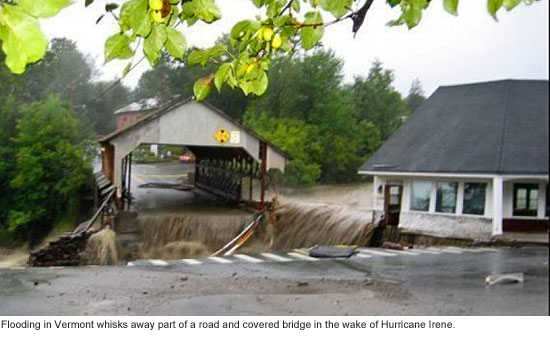 National Preparedness Month couldn’t come at a more appropriate moment. With the Northeast recovering from an atypical hurricane just one week after it was struck by a rare earthquake, the whole country is reminded just how tough disasters are to forecast. Preparation is vital, and Los Angeles County is getting in on the efforts.
National Preparedness Month couldn’t come at a more appropriate moment. With the Northeast recovering from an atypical hurricane just one week after it was struck by a rare earthquake, the whole country is reminded just how tough disasters are to forecast. Preparation is vital, and Los Angeles County is getting in on the efforts.
“One thing we can be sure of is that emergencies happen, disasters happen,” said director of L.A. County Department of Public Health Dr. Jonathan Fielding, speaking before the Board of Supervisors on Tuesday. “They’re not things we can project, but we have to be prepared.”
While most folks in L.A. County understand the importance of maintaining an emergency kit, Fielding points out an important aspect of preparedness some may not have considered–community cooperation.
“We have to start our preparation not just about ‘me,’ but about ‘we,’” he said.
“Connect, prepare and respond” has become the official catchphrase for an effective, community-based response. Neighborhoods “connect” by meeting to share contact info and resources. Together, they can then “prepare,” setting up methods of communication and creating a neighborhood map with evacuation routes. Finally, the community “responds” when a disaster happens. Emergency personnel are likely to have their hands full at such times, so cooperation is crucial to protecting all of us, especially vulnerable groups like the elderly and disabled.
The Department of Public Health’s website has preparedness tips, including ten things you should have in an emergency kit and how to create a family emergency plan. It also lists links to other important emergency resources. Residents can also call the Emergency Preparedness Hotline at 1-866-999-5228 and speak with operators in eight different languages.
National Preparedness Month is organized by the U.S. Department of Homeland Security with Federal Emergency Management Agency (FEMA), Centers for Disease Control and Prevention (CDC), the American Red Cross and others. These groups have valuable online resources available to the public, available here, here, and here. The Red Cross even has a user-friendly tool that goes step-by-step through emergency preparedness so there’s no excuse for getting caught unprepared when disaster hits.
Posted 8/31/11
Get a jump on “Pacific Standard Time”
August 31, 2011
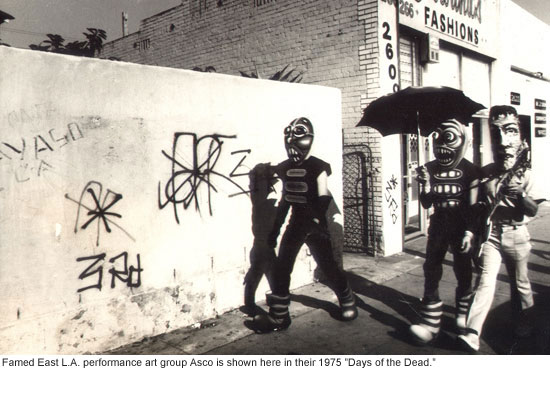 It’s going to be a big, big autumn for art in Los Angeles. In fact, a few places are already offering a sneak peak at the season’s most massive undertaking—“Pacific Standard Time.”
It’s going to be a big, big autumn for art in Los Angeles. In fact, a few places are already offering a sneak peak at the season’s most massive undertaking—“Pacific Standard Time.”
More than 60 cultural institutions and 60 galleries across Southern California will be joining forces in coming weeks to jointly tell the story of L.A.’s rise on the post-World War II art scene. The collaboration—its full name is “Pacific Standard Time: Art in L.A. 1945-1980”—will offer an unprecedented panorama of West Coast art and design.
The initiative was launched about ten years ago after local curators and artists became concerned that important L.A. work was not being appropriately preserved and archived.
“Many of the key figures were getting up in years, [and] their papers were being dispersed,” says Andrew Perchuk, deputy director of the Getty Research Institute. With nearly $10 million in grants from the Getty Foundation, a plan was launched to not only recapture an era, but also share its back story.
What emerged was the mother of all group shows.
“Initially, we thought there would be four or five related exhibitions, but then it just started snowballing,” says Rani Singh, co-curator of the Getty Center’s own exhibition, “Pacific Standard Time: Crosscurrents in LA Painting and Sculpture, 1950-1970,” which opens October 1.
That’s the official kickoff date for the “Pacific Standard Time” extravaganza, whose highpoints will include exhibitions featuring such greats as Ed Ruscha, Lita Albuquerque, Betye Saar, Henry Takemoto, David Hockney and Judy Chicago, as well as the first major study of California midcentury modern design.
Unofficially, however, dozens of exhibitions are scheduled to open early, with several key shows welcoming the public as soon as this week.
Among them: the first public showing in the United States of Edward Kienholz’s “Five Car Stud (1969-72),” and the first retrospective of the work of the legendary East L.A. underground arts collective, Asco.
Both of those exhibitions open Sunday, September 4, at the Los Angeles County Museum of Art, under the Pacific Standard Time banner. But LACMA is just one of many places offering a first taste of L.A.’s incoming autumn of art.
Here’s an early “Pacific Standard Time” sampler for this weekend:
- “California Art: Selections from the Frederick R. Weisman Art Foundation” has been open
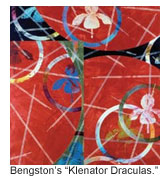 since August 27 at the Frederick R. Weisman Museum of Art near the Malibu campus of Pepperdine University. Weisman was an early patron and friend of L.A. artists and his collection features such now-renowned names as Ed Ruscha and Robert Irwin. The show features pieces by those artists and others whose work went on to become almost synonymous with art in L.A .
since August 27 at the Frederick R. Weisman Museum of Art near the Malibu campus of Pepperdine University. Weisman was an early patron and friend of L.A. artists and his collection features such now-renowned names as Ed Ruscha and Robert Irwin. The show features pieces by those artists and others whose work went on to become almost synonymous with art in L.A .
- “It Happened at Pomona: Art at the Edge of Los Angeles, 1969-1973, Part 1: Hal Glicksman at Pomona.” This show, at the Claremont liberal arts college that produced Chris Burden, has been open since August 30 at the Pomona College Museum of Art. Glicksman was a pioneering curator during the late 1960s and early 1970s, and his guidance shaped a generation of L.A. artists. The first of three “Pacific Standard Time” exhibitions at the museum, the Glicksman show features such important artists as Judy Chicago, Michael Asher and Lewis Baltz.
- Edward Kienholz’s “Five Car Stud (1969–72)” was among the artist’s last works in Los Angeles before he left to live between Idaho and
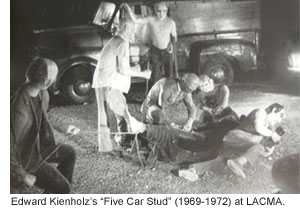 Berlin. It remains one of his most disturbing pieces to this day. A devastating tableau in a darkened room around a dirt patch, it depicts a black man being pinned down in a circle of headlights and castrated by white attackers while a white woman vomits in his pickup. Acquired by a Japanese collector shortly after a its only public showing (in Europe), it remained in storage until 2007, when it was sent for restoration to Kienholz’ widow, artist Nancy Reddin Kienholz. Its September 4 opening at LACMA, 17 years after Kienholz’ death, will mark the piece’s American public debut.
Berlin. It remains one of his most disturbing pieces to this day. A devastating tableau in a darkened room around a dirt patch, it depicts a black man being pinned down in a circle of headlights and castrated by white attackers while a white woman vomits in his pickup. Acquired by a Japanese collector shortly after a its only public showing (in Europe), it remained in storage until 2007, when it was sent for restoration to Kienholz’ widow, artist Nancy Reddin Kienholz. Its September 4 opening at LACMA, 17 years after Kienholz’ death, will mark the piece’s American public debut.
- “Asco: Elite of the Obscure, A Retrospective, 1972–1987 “ is the first retrospective of a L.A.’s seminal 1970s Chicano arts collective, now individually famous as Gronk, Harry Gamboa, Jr., Willie Herrón and Patssi Valdez. Inspired by influences that ranged from the Chicano rights movement to Dada, the four spent several years inciting happenings and doing performance art on the streets of East L.A., making themselves legendary in the city’s avant-garde underground long before anyone heard of guerrilla art or flash mobs. (Click here for a video of the L.A. artist Gronk recalling Asco’s style and history.) Today, a generation of young L.A. artists credit them as an influence.
- “Maria Nordman, Filmroom: Smoke, 1967–Present” is also opening September 4 at LACMA. Light—particularly the light in L.A.—is one of the great recurring themes in the “Pacific Standard Time” shows. Nordman began making her light-filled films and installations in the mid-1960s; this film was made in 1967 without a script on a beach in Malibu. It features two actors, but the sun and the Pacific Ocean are co-stars, the artist has said.
Posted 8/31/11
From scheme to scam
August 30, 2011
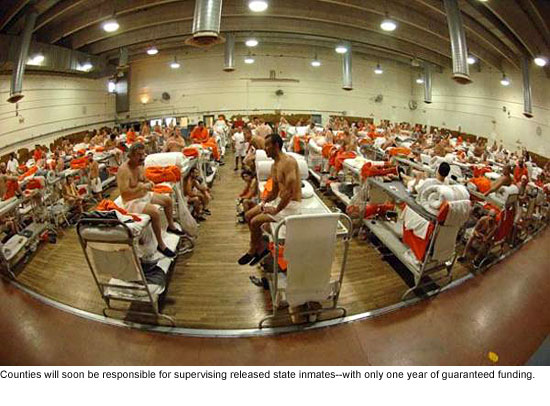 In Sacramento, it was simply called “realignment”—a seemingly benign name for a plan that we now believe could lead to higher crime rates and huge, unsustainable costs for Los Angeles County.
In Sacramento, it was simply called “realignment”—a seemingly benign name for a plan that we now believe could lead to higher crime rates and huge, unsustainable costs for Los Angeles County.
In short, as I warned in January, the county was conned.
Realignment represents a massive shift in criminal justice responsibilities. Beginning October 1, the counties, not the state, will begin supervising thousands of newly released California prison inmates convicted of non-violent, non-serious, non-sexual crimes. What’s more, such future defendants will be sentenced to county jail, rather than state institutions, which means that some 7,000 additional inmates a year will be crammed into our already crowded jail system.
And here’s the capper: the legislation that created these profound and costly changes guarantees state funding only for the first year. The price tag for the second year is an estimated $300 million. If the state’s budget remains as stressed as it is, who knows whether we’ll get all or any of that amount. At the risk of sounding cynical, I believe the state was more concerned about vaporizing these expenses from its deficit-plagued budget than about the effectiveness of our criminal justice system.
Earlier this year, in an effort to obtain buy-in from California’s counties, the state dangled the promise of realignment funding for five years, along with a constitutional amendment for the years beyond that. I sharply questioned the likelihood of that happening. But we were assured that the money would be there. As a result, counties across the state took the bait and are now on the hook.
Indeed, once the state removed this financial burden from its books and foisted it on local governments, the deed was done. The state now has no incentive to make good on its earlier promise to fully reimburse counties for their new supervision and incarceration responsibilities.
So, beyond the fiscal dangers, what does realignment mean for crime in our county? Here’s what Los Angeles County District Attorney Steve Cooley said in a letter on Tuesday to the Board of Supervisors. “Those who view realignment as a positive development are not just overly optimistic, they are flat wrong. We are in the awful position of having to wait for further crime and substantial victimization to be proven right.”
The logic is persuasive. As the county jails become more crowded with defendants formerly sentenced to state prison, Sheriff Lee Baca will likely have no choice but to increase the number of early releases. He’s done a yeoman’s job of juggling the jail population. But as we’ve seen in the past, this can potentially lead to the commission of more crimes. I hope the district attorney and I are wrong. Still, there’s no question that realignment is creating conditions that do not favor greater public safety.
Like it or not, however, this is now California law and we’re responsible for—and committed to—getting the job done smartly and efficiently. As part of that law, the Board of Supervisors was presented Tuesday with an implementation plan by a multi-agency panel called the Community Corrections Partnership. It takes a 4/5 majority by the supervisors to reject the plan, which will come back to us next Tuesday for a final vote.
As we begin this chancy realignment endeavor, I caution our state leaders to pay very close attention to the impact their budget scheme has on crime and essential county services that could suffer if substantial funding is not provided beyond the first year. Of course, the Board of Supervisors will do its best to plan for worst-case scenarios.
But this much I know already, we won’t be fooled again.
Posted 8/30/11
A “Great Wall” becomes even greater
August 30, 2011
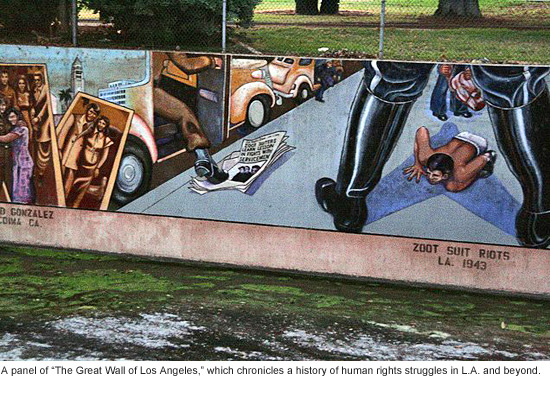 Every city has its hidden treasures. Take “The Great Wall of Los Angeles”.
Every city has its hidden treasures. Take “The Great Wall of Los Angeles”.
More than three decades old and 13 feet high, it unfurls like a vibrant tattoo for nearly a half-mile, recounting the history of human struggle and achievement along a concrete retaining wall in the Tujunga Flood Control Channel.
Flanked by a narrow park, it’s easy to miss what’s believed to be the longest mural on the planet. And yet it is this singular work—painted by hundreds of hands in the course of five summers—that launched Los Angeles’ reputation as the world’s mural capital.
Despite such rich origins, few public artworks have had to endure so many indignities. It’s been soiled by car exhaust, corroded by smog, bleached by fertilizer runoff and baked by the relentless sun of the San Fernando Valley. What’s more, political crosscurrents over the decades have generally put the kibosh on obvious possibilities for expanding the project, even as its once radical-seeming material—from the sins of the Spanish missionaries to the Japanese internment—has crossed into the historical mainstream.
“One would think it would have completely disappeared by now, given all it’s gone through,” marvels Judy Baca, the Watts-born activist, artist and UCLA professor whose vision has, since 1976, been the guiding light behind the project. “But what’s remarkable is how much of it is still there.”
Los Angeles has more than 3,000 murals, and their upkeep has been an ongoing civic battle. But next month will bring good news from “The Great Wall.”
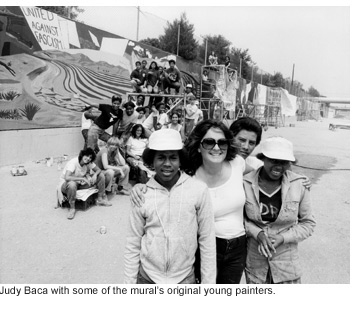 For the past three years, Baca and a crew of artists, volunteers and interns have been painstakingly restoring the artwork. In mid-September, the project is expected to be finished. A ribbon-cutting and celebration are being planned for September 17 at the park near the wall, which lies between Burbank Boulevard and Oxnard Street off Coldwater Canyon Avenue. (Click here for driving directions.)
For the past three years, Baca and a crew of artists, volunteers and interns have been painstakingly restoring the artwork. In mid-September, the project is expected to be finished. A ribbon-cutting and celebration are being planned for September 17 at the park near the wall, which lies between Burbank Boulevard and Oxnard Street off Coldwater Canyon Avenue. (Click here for driving directions.)
After that, Baca says, signage, lighting and a solar-lit “green” bridge with interpretive stations will be added, the better to see and understand the monument to L.A.’s multi-cultural history.
The entire $2.1 million improvement—spearheaded by the Venice-based Social and Public Art Resource Center (SPARC), with funding and assistance from the City of Los Angeles, L.A. County, the California Cultural and Historical Endowment, the Rockefeller and Ford foundations, the Santa Monica Mountains Conservancy, Supervisor Zev Yaroslavsky’s office, and others—should be finished late next year.
That, in turn, will set the stage for a fundraising drive to finish the next four decades of the mural (it now stops in the 1950s) using already-designed sketches that will take the narrative through the Vietnam War and the Los Angeles riots up to the 21st century.
For Baca, now an iconic figure on the Los Angeles art scene, the restoration is both a personal and civic milestone. A one-time high school art teacher in the San Fernando Valley, she has spent the better part of her life as a fiery advocate for public art.
As a summer art teacher in 1970 for the City of Los Angeles, she organized rival gang members in East Los Angeles to paint “Mi Abuelita,” a mural of a grandmother with outstretched arms that for many years was a Hollenbeck Park landmark. The project landed Baca a job as the head of a citywide mural program manned by at-risk teenagers, and led from there to the creation of SPARC, the nonprofit community arts organization.
“The Great Wall,” commissioned by the U.S. Army Corps of Engineers at the behest of the L.A. County Flood Control District to help improve the area around the Tujunga Wash, was SPARC’s first project. Since then, SPARC, for which Baca is artistic director, has produced hundreds of murals throughout the city, commissioning hundreds of artists and training thousands of youth apprentices.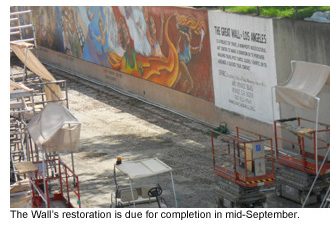
More than 400 at-risk youths, along with scores of artists and historians and hundreds of community members, worked on “The Great Wall” between 1976 and 1984, when painting stopped due to rising costs and safety concerns and the changing political climate during the Reagan Era. Many of those who worked on it found the experience to be life-altering, as this video recounts.
Although the mural’s initial segments were designed by at least 10 artists, each taking a different historical period, it was Baca who created the overall aesthetic beginning with the 1920s mural panel. When the “Great Wall” was started, she was 30. By the time she and her crews celebrate its restoration, she’ll be a week shy of 65. Time, she laughs, has taken a toll on the artist as well as the art.
“We have a funny thing going on down there,” she says of the restoration. “We have the senior citizens, who aren’t body-agile but have great hands, and then we have the younger ones, whose hands aren’t as adept but who have the bodies to continue. We’re transferring knowledge and teaching them to collaborate—it’s a very important moment.”
But, she adds: “I think this will be my last year on the channel. It’s incredibly physically demanding. I think it’s time for the younger people to take over.”
Meanwhile, she says, she’s had the privilege of revisiting a formative period in her life.
“I’m having these dialogues with my younger self on a daily basis,” she says. Simple decisions—what color to use in restoring the image of an Okie, or whether to underscore the Madonna-and-child subtext of a migrant worker holding a baby—“give me this visual of who I was when I painted it,” Baca says.
“That Judy was working with this incredible passion. She had boundless energy and this incredible willingness to put it all out there. This Judy, at 65, would probably say, ‘This is way too hard.’”
If she had to do it all over again, she says wouldn’t change a thing.
Although the project, in retrospect, was an “incredible marathon” and a massive undertaking, she says, it also was “a great labor of love”—and of youthful idealism.
“I may have much more wisdom now, but that girl was limitless,” says Baca. “She was limitless.”
Movie buffs flex at the Bowl
August 30, 2011
Quick, what Canadian-born game show host appeared as himself in the 1992 film White Men Can’t Jump?
If you answered “Who is Alex Trebek?” consider venturing out to the Hollywood Bowl to show off your trivia knowledge at “The Big Picture: AFI’s Great American Movie Quiz,” hosted by Trebek himself.
Twenty multiple-choice questions covering all eras of film history will be posed to the audience, which will raise multicolored glow sticks corresponding to its answer choices. After the audience weighs in, film clips indicating the correct answer will illuminate the screen, and the Hollywood Bowl Orchestra will furnish the appropriate music.
The quiz, hosted by the Los Angeles Philharmonic Association and the American Film Institute, takes place this Sunday, September 4, at 7:30 p.m. Tickets range from $16 to $168, and are available online or by calling (323) 850-2000. The Hollywood Bowl’s own website laments the parking situation there, so plan on taking Metro, or make use of the Park & Ride and Bowl Shuttle to save time and money.
Posted 8/30/11
Get your Fair fix this weekend
August 30, 2011
Why should Iowa have all the fun? This Labor Day weekend marks the start of the 89th Los Angeles County Fair, where daily pig races are only a small part of the festivities.
From Saturday, September 3, until Sunday, October 2, Wednesdays through Sundays, the Fairplex in Pomona will be replete with nearly every imaginable diversion. “Grandstand Concerts” will feature well-known musical acts like En Vogue with Salt-N-Pepa, Earth, Wind & Fire, the Doobie Brothers and this Monday (when the fair is open for Labor Day), The Beach Boys. But there’s more than just music at the main stage. Fairgoers can also witness large-scale mariachi singing and dancing, a monster truck rally or a demolition derby.
There will be plenty of fun away from the main stage, too. Educational presentations include a marine exhibition with live sharks and other sea creatures, a flower and garden pavilion and paleontologists with fossils. A lumberjack show, bears, trapeze artists, and, yes, fast-moving pigs, are also part of the entertainment.
Within the larger fair this year are four cultural festivals: Latin American, Basque, Celtic and Asian culture will be featured on individual weekends, bringing music, dance, and art from around the world.
And, of course, no county fair would be complete without oodles of food, ranging from the über-healthy to the cringe-inducing-and-artery-clogging. We’re talking deep-fried Kool-Aid, sushi, giant turkey legs, fruit smoothies and maple bacon doughnuts. You only live once, but additional health insurance is not included with the price of admission–so consume at your own risk.
Fair organizers have a lot planned, so check out their website for more details and schedules of festivities. Directions, admission prices, and other important information can all be found online. Tickets for the Grandstand Concerts must be purchased separately from fair admission. Metrolink will be providing rides to the fair from Union Station, so save on parking and gas by leaving your car behind.
Posted 8/30/11
Don’t walk on by this concert
August 30, 2011
What the world needs now is music, sweet music—preferably with a Burt Bacharach-Hal David pedigree. A tribute to the prolific pop duo, which penned twenty-two Billboard Top 40 hits in the latter half of the 20th Century, takes place this Labor Day at the Will Geer Theatricum Botanicum in Topanga Canyon.
The special afternoon concert, which benefits the nonprofit Theatricum, was organized by singer-songwriter and Topanga native Inara George. Over the past six years, her summer concerts have been the toast of Topanga, honoring the likes of Leonard Cohen, Neil Young, and her father, Lowell George. She also has performed at the outdoor amphitheatre as Shakespeare’s Juliet, and as a member of indie bands The Living Sisters and The Bird and The Bee.
Joining her Monday will be special guest John C. Reilly and about a dozen other local musicians and performers. They will cover the Bacharach/David catalogue, which contains hits like “Raindrops Keep Fallin’ on my Head,” “I Say a Little Prayer,” “Always Something There to Remind Me,” “Walk On By” and “What the World Needs Now is Love.”
The Theatricum Botanicum presents culture and history, from Shakespeare to folk music, in a verdant, wooded outdoor forum. It holds theatre classes for all ages and holds youth summer camps for kids, along with other community cultural activities.
The tribute takes place Monday, September 5, at 2 p.m. Tickets are $25 for the upper tier and $40 for the lower tier. They may be purchased in advance online or by calling (310) 455-3723. The Theatricum Botanicum is located at 1419 North Topanga Canyon Boulevard, and free parking is available onsite or along the road. Snacks are available from the concession stand, or bring a lunch with you. Picnickers are invited to kick back and explore the grounds before and after the show.
Posted 8/30/11
Ready or not, here they come
August 26, 2011
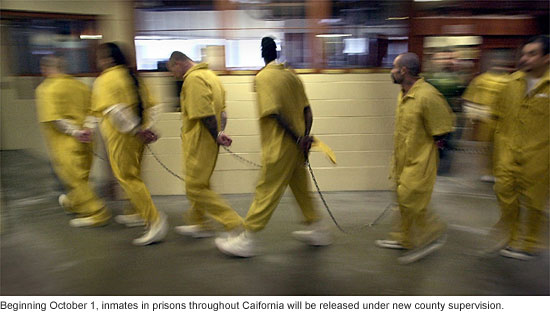 With the clock ticking, a multi-agency panel in Los Angeles County has approved a plan to confront a “monumental” shift in California’s criminal justice system, one that forces the county to supervise thousands of newly released state inmates and incarcerate thousands more in its strained jail system.
With the clock ticking, a multi-agency panel in Los Angeles County has approved a plan to confront a “monumental” shift in California’s criminal justice system, one that forces the county to supervise thousands of newly released state inmates and incarcerate thousands more in its strained jail system.
Passage of the complex plan by the Community Corrections Partnership was required under a new state “realignment” law pushed by Gov. Jerry Brown and aimed at reducing California’s prison population while narrowing the state’s budget deficit. On Tuesday, the CCP’s plan goes before the Board of Supervisors, where it can only be rejected by a 4/5 vote.
Supervisors had lobbied hard against the state’s realignment law. They argued that Brown and the legislature were simply shifting the state’s burdens to California’s hard-pressed counties, with little regard for the financial implications or public safety risks. In fact, the state has committed to funding only the first year with a $112-million block grant and $8 million in start-up funds.
“This is going to be a tragedy for justice in our county,” CCP member Dist. Atty. Steve Cooley said Wednesday before casting the sole vote against the realignment implementation plan. “It’s predictable, it’s inevitable.”
The reality is that not even a unanimous rejection of the plan would have blocked or delayed implementation of the new law, known as AB 109.
Beginning October 1, the first flow of newly released state prisoners will begin arriving here and in counties across the state, where they’ll be supervised by local authorities rather than state parole officers. Under the state’s realignment program, only inmates convicted of non-violent, non-serious, non-sexual offenses will be placed under county supervision.
In Los Angeles County, that number is expected to hit 9,000 by June, swelling to as many as 15,000 in the second year. Taking the lead in their post-release supervision will be the county’s Probation Department, despite a highly publicized and contentious bid by Sheriff Lee Baca to assume that role.
Already, inmate files have begun arriving for pre-release review by probation, mental health and other designated officials. The goal is to make sure each parolee is provided with the necessary oversight and programs for rehabilitation. The process also is intended to weed out inmates who should have been exempted from the program because of serious or violent criminal histories or because they’d been earlier designated by corrections officials as “mentally disordered offenders.”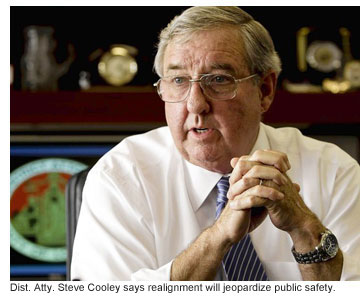
Inmates participating in “post-release community supervision,” who’ll be freed from 33 state prison locations, will be given $200, with orders to report to their designated locations within two business days. Despite the expressed fears of the Sheriff’s Department, the state says that only 2% of this type of inmate population has historically failed to show up for parole orientations within five days of their scheduled appearances.
Once they arrive at their assigned locations, a more thorough evaluation will take place, including risk assessments and “behavioral health screening.” Each supervised person will receive a “risk level determination” of Tier I (high), Tier II (medium) and Tier III (low).
Community-based organizations will be tapped to provide such services as substance abuse treatment, job training and other assessed needs. In the short term, because of time constraints, only organizations with existing county contracts will provide services. But longer term, the county will soon request proposals so more organizations can participate and specific service gaps can be filled.
One of the trickiest elements of the plan—described as a work in progress—will be to determine the precise mental health histories and needs of the new charges. Initial prisoner packets will include no detailed medical information. Talks are underway with state corrections officials to provide mental health records directly to the county’s Department of Mental Health but cost and confidentiality issues have yet to be resolved.
Post-release supervision represents just one component of the realignment challenges. The bill’s most controversial and daunting requirement changes the very nature of California’s county jails and, according to some criminal justice officials, poses the highest potential risk to public safety.
Under the legislation, defendants convicted of non-violent, non-serious, non-sexual crimes will no longer be sentenced to state prison unless they have prior violent or serious convictions or are required to register as sex offenders. Beginning in October, this class of defendants will be serving their time in county jail at an estimated rate of 7,000 a year. That means Sheriff Baca will have to further juggle and prioritize who stays behind bars and who’s freed on work release, GPS monitoring or other “community based alternatives.” Thousands of more beds, depending on funding, also would have to be opened at various jail facilities.
District attorney officials and others worry that, because of overcrowding, this new class of inmate will inevitably be sprung early and end up back on the streets, committing crimes at a time when, in the past, they’d be sitting in state prison cells.
In a section of the CCP implementation report titled “jail population management,” the authors state that the wholesale transfer of such responsibilities from the state to Los Angeles County “is monumental and will not only mark a challenge for the Sheriff’s Department but also the District Attorney, the Public Defender, the Probation Department, the Department of Mental Health, the Department of Health Services, the Superior Court, and all municipalities.”
But there are others who say they’re ready and anxious for the opportunity to help the returning inmates get fresh starts. For the past two months, representatives of community and faith-based groups have shown up at CCP meetings, where they’ve urged that a greater emphasis in the discussions be placed on rehabilitation rather than incarceration. And Wednesday was no exception.
As one speaker put it: “Let’s take a mess and turn it into a blessing.”
Posted 8/26/11





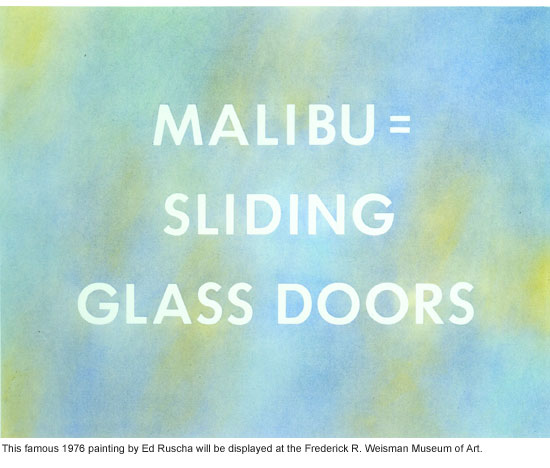
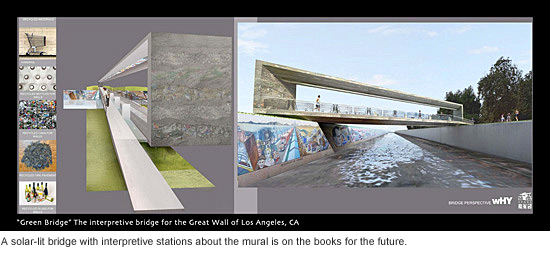

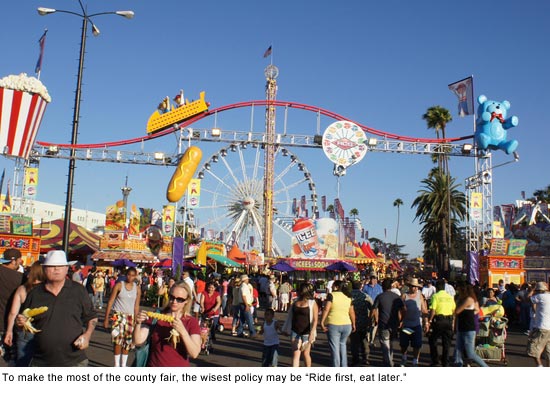
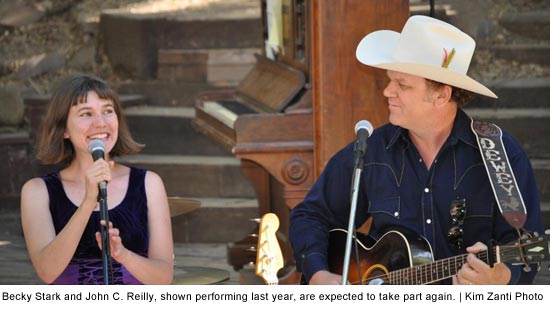





 Check for the latest closure information
Check for the latest closure information








